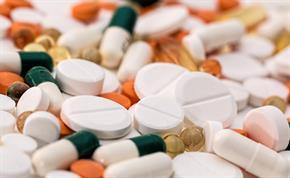
Antibiotics are medications used to treat, and in some cases prevent, bacterial infections.
They can be used to treat everything from relatively mild conditions like acne to potentially life-threatening conditions like pneumonia and meningitis, and kill or inhibit the growth of bacteria by causing the bacteria cell wall to disintegrate.
Doses of antibiotics can be provided in several ways:
There are a number of antibiotics produced and dispensed but most of them can be broadly classified into six groups:
How they’re used in the ambulance service
General A&E operations only carry and administer one antibiotic – benzylpenicillin. Mixed with ‘water for injection’ and administered by IV or IM injection, it’s used in the treatment of suspected meningococcal disease (meningitis with non-blanching rash or meningococcal septicaemia). In these cases, the sooner benzylpenicillin is administered the better the outcome.
Critical care doctors and paramedics also carry and are able to give ceftriaxone injections (a cephalosporin antibiotic used for the treatment of meningococcal disease), and co-amoxiclav injections (used with open fractures, thoracostomies, thoracotomies, and serious respiratory infections).
In addition, our emergency care practitioners have extra antibiotics that they can supply and administer to patients, which can be used to treat everything from UTIs to skin and chest infections.
What’s the problem with using them?
Every year, European Antibiotic Awareness Day is held on November 18. It's a Europe-wide public health initiative that encourages responsible use of antibiotics.
Antibiotic resistance is an everyday problem across England and Europe. The spread of resistant bacteria in hospitals in particular is a major issue for patients' safety.
Antibiotic resistance is one of the biggest threats facing us today. Without effective antibiotics, many routine treatments will become increasingly dangerous. Setting broken bones, basic operations and chemotherapy all rely on access to antibiotics that work. By using antibiotics less often we can slow down the development of resistance. It’s not possible to stop it completely but slowing it down stops resistance spreading and buys some time to develop new types of antibiotics.
It is also important to remember that in most cases for a health individual antibiotics may only reduce the affective of the infection by a day. In high risk patients such as immunosuppressed or systemically unwell they will work better.
They are for use on bacterial infections not a virus.
People must complete the whole course of treatment, even if they feel better, if not this aids to increased risk of resistance as this doesn’t kill the bacteria.
Find out what you can do to help slow down antibiotic resistance by visiting the NHS Choices website.
Published 21st November 2014